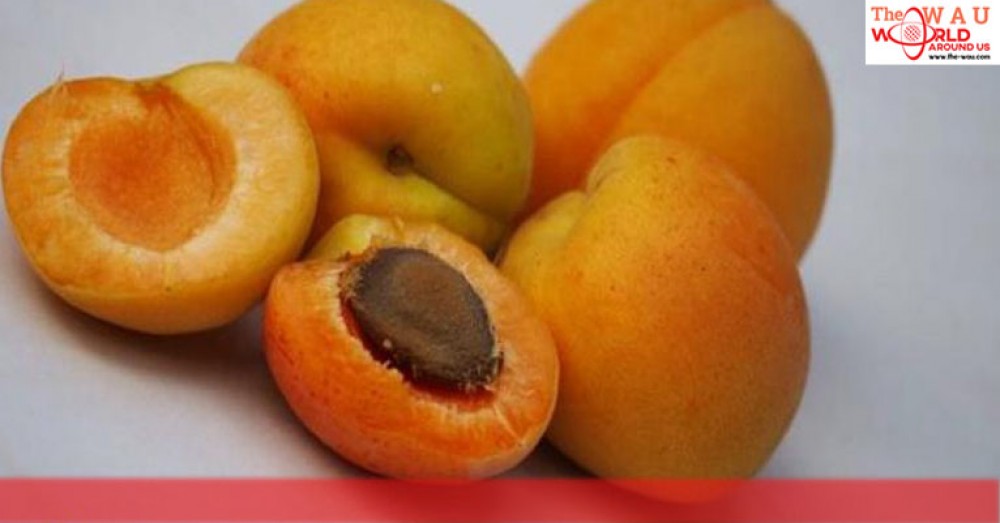A large part of truly experiencing a foreign land, its culture and its people is to indulge in the local fare. Whether you attempt a questionable looking dish from a street vendor or you gather around a native’s dinner table, FOOD unites you with what is special about that particular place.
However, before you grab your fork, knife and backpack, take NOTE of the 21 most dangerous foods in the world:
1. Apricot Seeds: Even though fruit is considered healthy, eating large quantities of fruit seeds can be deadly! Apricot seeds in particular contain cyanogenic glycosides, which are converted into hydrogen cyanide when ingested and interfere with your body’s ability to use oxygen. In Turkey, where apricot trees are plentiful, many people have died after eating too many apricot seeds.
2. Star Fruit: The juice of this fruit is poisonous for anyone who has bad kidneys. Just 100 milliliters has enough neurotoxins to impact your brain and nerves.
3. Hot Dogs: According to the American Academy of Pediatrics, hot dogs are responsible for about 17% of all choking deaths in children under 10 years old. BEWARE – they are a huge choking hazard!
4. Silver Stripe Blaasop: The liver, skin and organs of this rare fish are extremely toxic and can cause fatal paralysis and intense circulation problems. The silver stripe blaasop is considered a delicacy in the Middle East and the Mediterranean.
5. Rhubarb Leaves: Deadly crystals in your kidneys can form when you eat these leaves. They contain oxalic acid, which is corrosive and can cause diarrhea, nausea, difficulty breathing, eye pain, burning in your mouth and throat and red urine.
6. Durian: Popular in Southeast Asia, this smelly fruit contains cyclopropene fatty acids, which are toxic when uncooked. This fruit can also be deadly if you combine it with alcohol. Your body can have a hard time breaking down the toxic byproducts of alcohol when you eat durian.
7. Cassava (Manioc): This root vegetable is better known as tapioca. The leaves and roots of this vegetable are full of cyanide. If they are not carefully prepared or eaten raw, the effect can be deadly. They are found in South America and Africa, but are used in the U.S. to make puddings, juices, chips and cakes.
8. Monkey Brains: Eaten raw, baked, or cooked, monkey brains are mostly found in Asia. Eating them can cause an incurable or fatal degenerative neurological condition known as Variant Creutzfeldt-Jakob disease. By eating monkey brains, your own brain tissue can degenerate!
9. Pangium Edule: This fruit is poisonous to humans, because it contains hydrogen cyanide. It has been referred to as “the fruit that nauseates,” but can be safely eaten if cooked properly. Pangium edule must be boiled without its shell, soaked in water and then buried in banana leaves and ash to ferment for a month. Doing so releases the water-soluble hydrogen cyanide, which can then be washed away.
10. Red Kidney Beans: These beans have phytohaemagglutinin, which can be toxic when eaten. For safe eating, make sure to boil the beans for at least 10 minutes. Any less time or lower temperature than boiling can increase the bean’s toxicity.
11. Raw Cashews: The “raw” cashews you buy from the market have actually been steamed to remove urushiol, which is a deadly chemical that is found in poison ivy. However, too much urushiol can be fatal, so never eat truly raw cashews.
12. Elderberries: When properly ripe and cooked, these berries are safe to eat, but only without their leaves, twigs and seeds (which all contain cyanide). Seizures and severe diarrhea can occur if you eat unripe or undercooked elderberries.
13. Casu Marzu: Made with goat’s milk, this Sardinian soft cheese is left uncovered while it is ripening. Therefore, flies are able to lay eggs on it, which leads to maggots. The maggots cause the cheese to ferment, but what is harmful is the remaining larvae. When eaten, the larvae can cause severe illness and discomfort by irritating your intestinal wall.
14. Echizen Kurage: Considered a Japanese delicacy, this poisonous jellyfish lives on tuna. To be eaten without risk, the toxic parts are removed and then the rest needs to be thoroughly cooked.
15. Fesikh: This fish must be dried in the sun and preserved with salt for 1 year before it is safe to consume. It is a traditional Egyptian dish made with fermented mullet fish that is eaten during a local spring festival.
16. Sannakji: Eaten in Korea, a baby octopus is cut into small pieces while still alive and then served immediately. Because the suction cups are still active on the raw tentacles, they can stick to your throat and choke you to death. Chewing the food well and swallowing quickly makes this dish slightly safer to consume.
17. Blood Clams: These clams live in low oxygen environments, which means they ingest more viruses and bacteria to get the nutrients they need. As a result, they can contain hepatitis A, hepatitis E, typhoid and dysentery. To stay safe, avoid clams that come from China’s waters.
...[ Continue to next page ]
Share This Post












